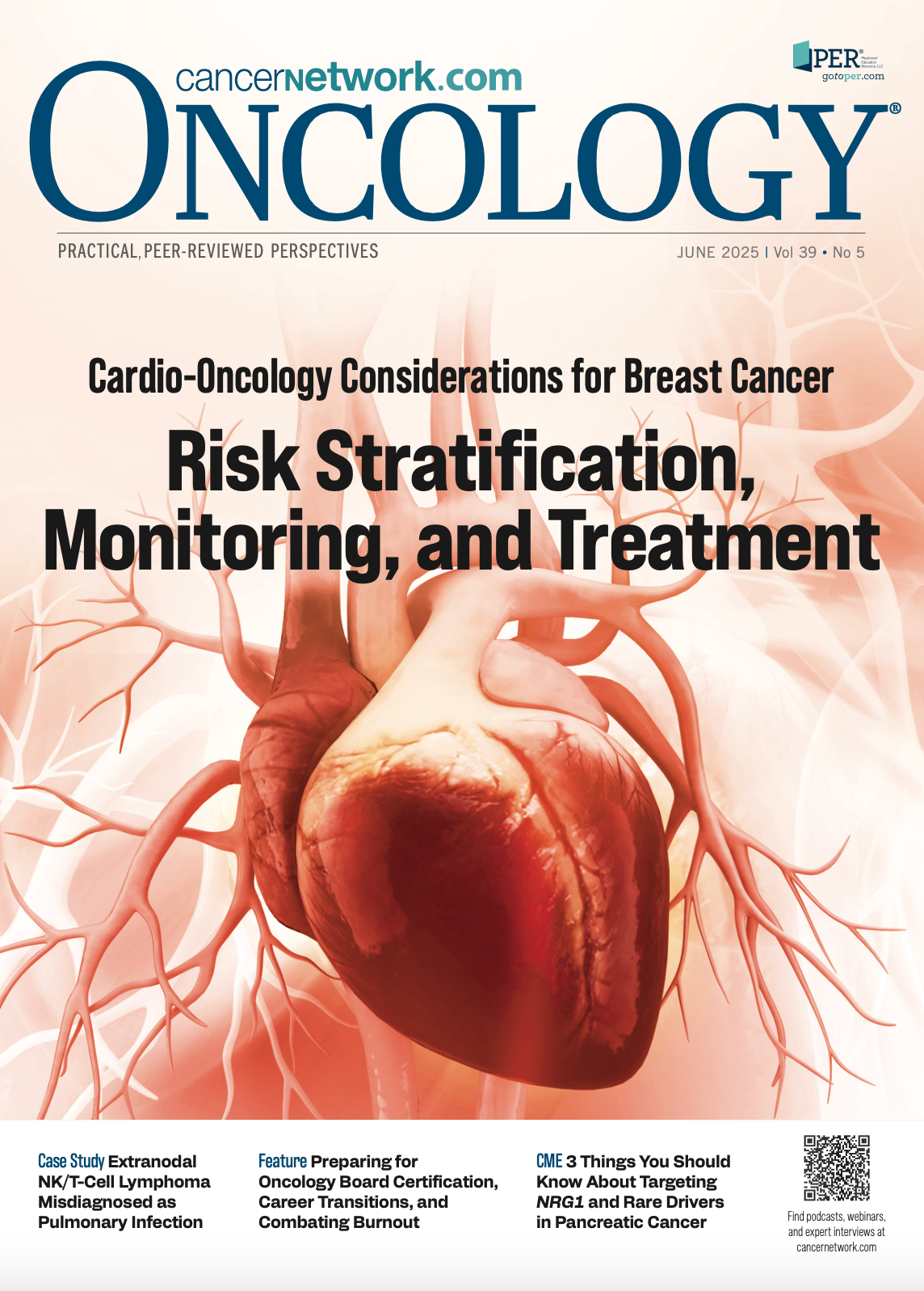Current Use and Future Directions of Artificial Intelligence in Hematology/Oncology
As AI revolutionizes cancer care by enhancing diagnosis, treatment, and clinical trial matching, it may lead to improved patient outcomes and streamlined workflows.
The author

Artificial intelligence (AI) is being incorporated into many aspects of our daily lives. This also includes many areas of cancer clinical care and research. For example, AI applications are being incorporated at a rapid rate into cancer research, cancer detection, diagnosis, and treatment. One example of active use of AI is to enhance mammograms. An example of a large AI mammography study includes the MASAI clinical trial in Sweden.1 This study reported that an AI-assisted workflow led to a 44% reduction in radiologist workload with comparable clinical performance metrics.1 Another example is the ScreenTrustMRI clinical trial for the use of an AI risk prediction model to select women for additional MRI use (NCT04832594), with results to be made available soon. An additional use of AI is in histopathology imaging evaluation. This model, called CHIEF, was trained on 15 million unlabeled images to look at specific sections of an image and the whole-slide image.2 In test data sets, the CHIEF tests achieved 96% accuracy across multiple cancer subtypes. Tumor molecular profiling and DNA sequencing are needed to direct the optimal therapy, but it often takes weeks. Predicting tumor molecular profiles as well as the tumor microenvironment would therefore be extremely helpful and is another area of active cancer research using AI.
Of course, a more accurate cancer diagnosis is only helpful if this assists clinicians in optimizing the therapy. AI algorithms are also being developed to directly improve cancer treatment. This considers tumor characteristics, patient characteristics, and treatment delivery methods. One additional area of AI use is automated prescreening and matching of patients to an appropriate clinical trial for the treatment of their malignancy. Properly deployed, AI could increase the identification of subjects who are eligible and match them to the appropriate clinical trial for treatment of their cancer type. Physicians and other workforce workflows are also a target for AI improvement applications. Several companies have developed AI-assisted scribing technologies to generate documentation with ambient listening based on transcriptions in a clinical encounter.3 Another aspect could also be unifying disparate medical records from multiple systems into concise clinical summaries of a patient’s clinical case. This would allow the medical team to focus on treatment rather than gathering data that are often difficult to find from different medical records within multiple medical record systems that don’t talk to each other.4
Despite all the excitement for the use of AI in cancer diagnosis, research, and treatment, there are many obstacles yet to be overcome. One big challenge includes data sharing and privacy. To overcome these challenges in data sharing and privacy concerns, options being evaluated include centralized learning with multiparty legal agreements and security protocols. This method allows the transfer of data to a centralized location with security protocols in place. Other options are deidentification and public release of data via a consortium model. The third option is federated learning, where data remain private at each site, but machine learning models are jointly updated and shared.
There is a lot of excitement about all the applications for AI in diagnosis, treatment, and clinical trial matching to improve the outcome for our patients with malignancies. We have only started to scratch the surface of what is possible.
References
- Lång K, Josefsson V, Larsson AM, et al. Artificial intelligence-supported screen reading versus standard double reading in the Mammography Screening with Artificial Intelligence trial (MASAI): a clinical safety analysis of a randomised, controlled, non-inferiority, single-blinded, screening accuracy study. Lancet Oncol. 2023;24(8):936-944. doi:10.1016/S1470-2045(23)00298-X
- Wang X, Zhao J, Marostica E, et al. A pathology foundation model for cancer diagnosis and prognosis prediction. Nature. 2024;634(8035):970-995. doi:10.1038/s41586-024-07894-z
- Nuance Communications. Nuance and Microsoft announce the first fully AI-automated clinical documentation application for healthcare. March 20, 2023. Accessed May 25, 2025. https://tinyurl.com/47y47aef
- Luchini C, Pea A, Scarpa A. Artificial intelligence in oncology: current applications and future perspectives. Br J Cancer. 2022;126(1):4-9. doi:10.1038/s41416-021-01633-1

How Supportive Care Methods Can Improve Oncology Outcomes
Experts discussed supportive care and why it should be integrated into standard oncology care.